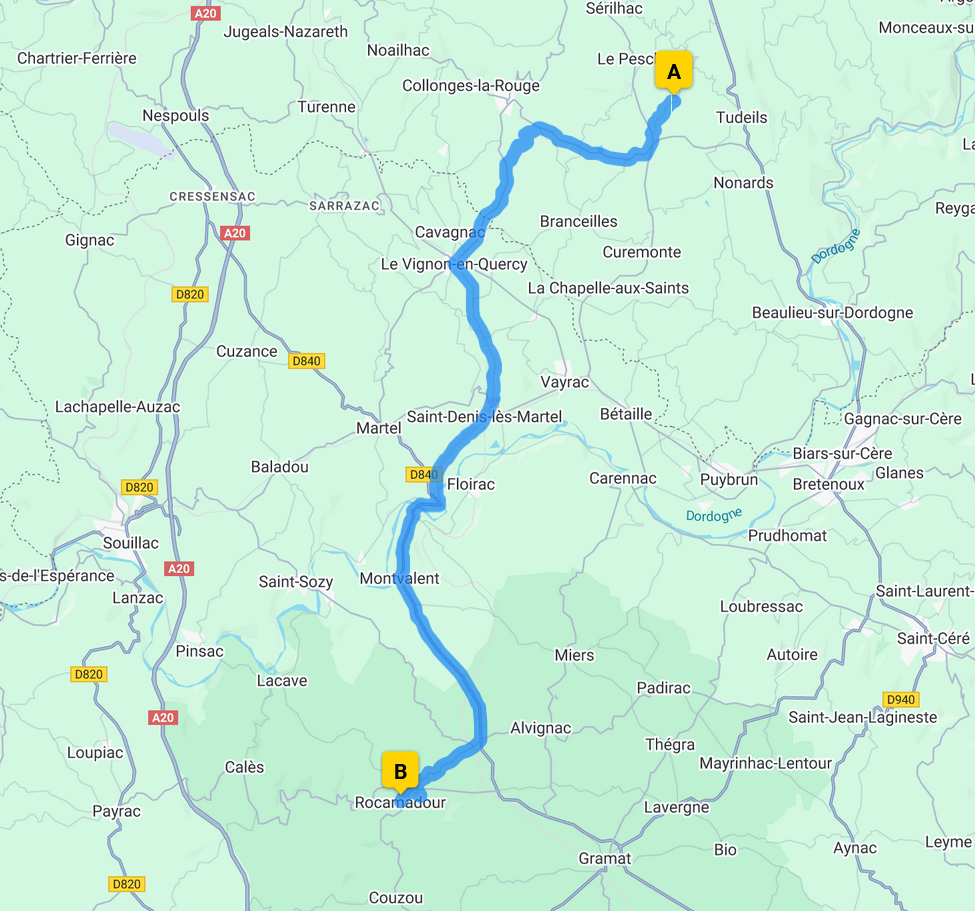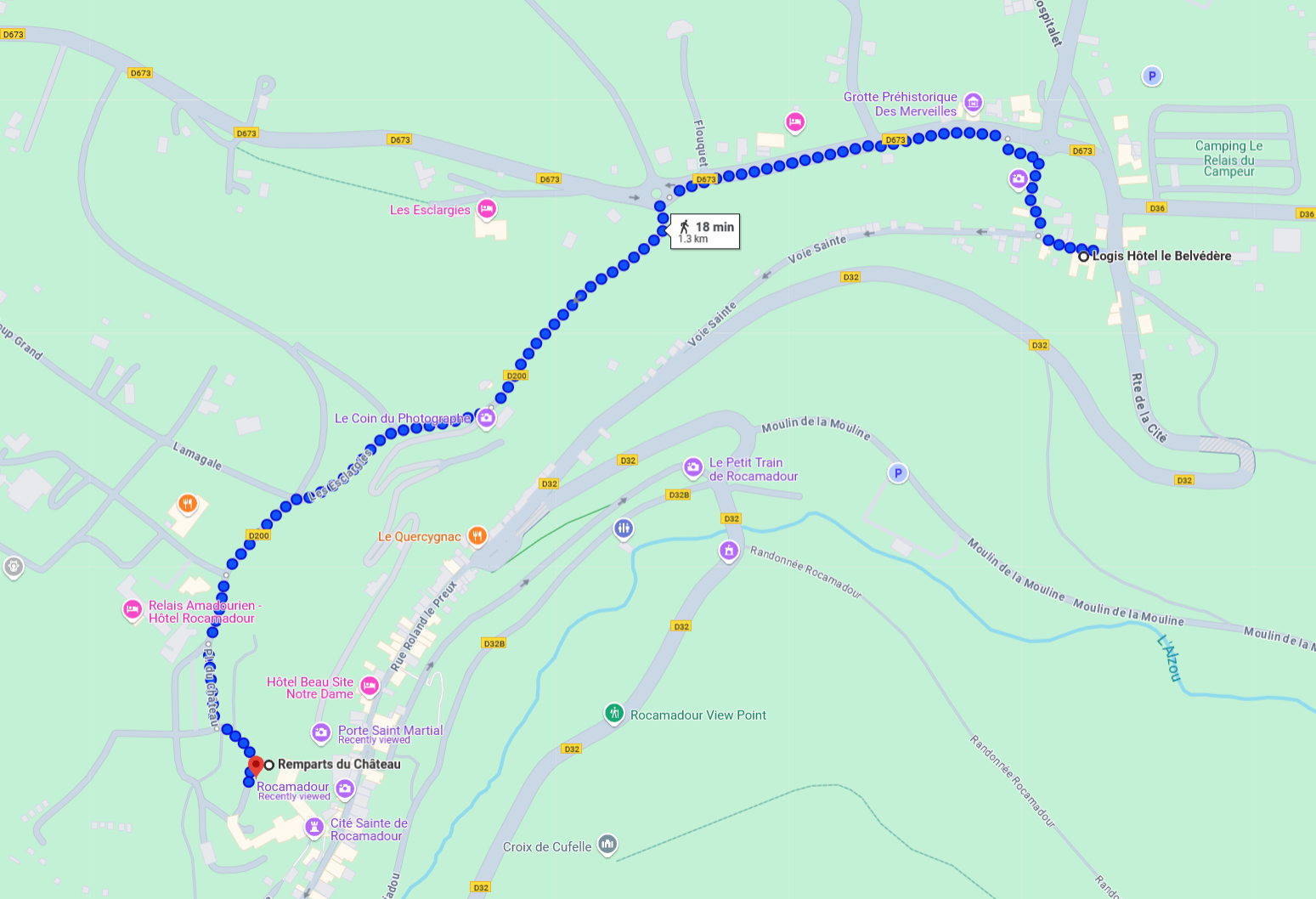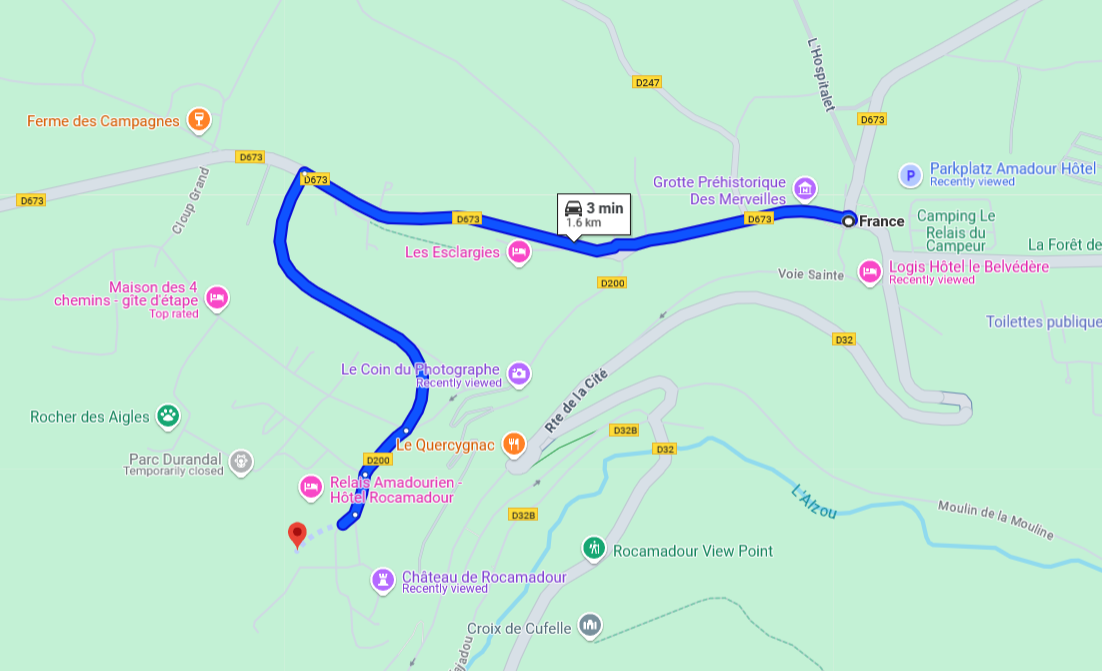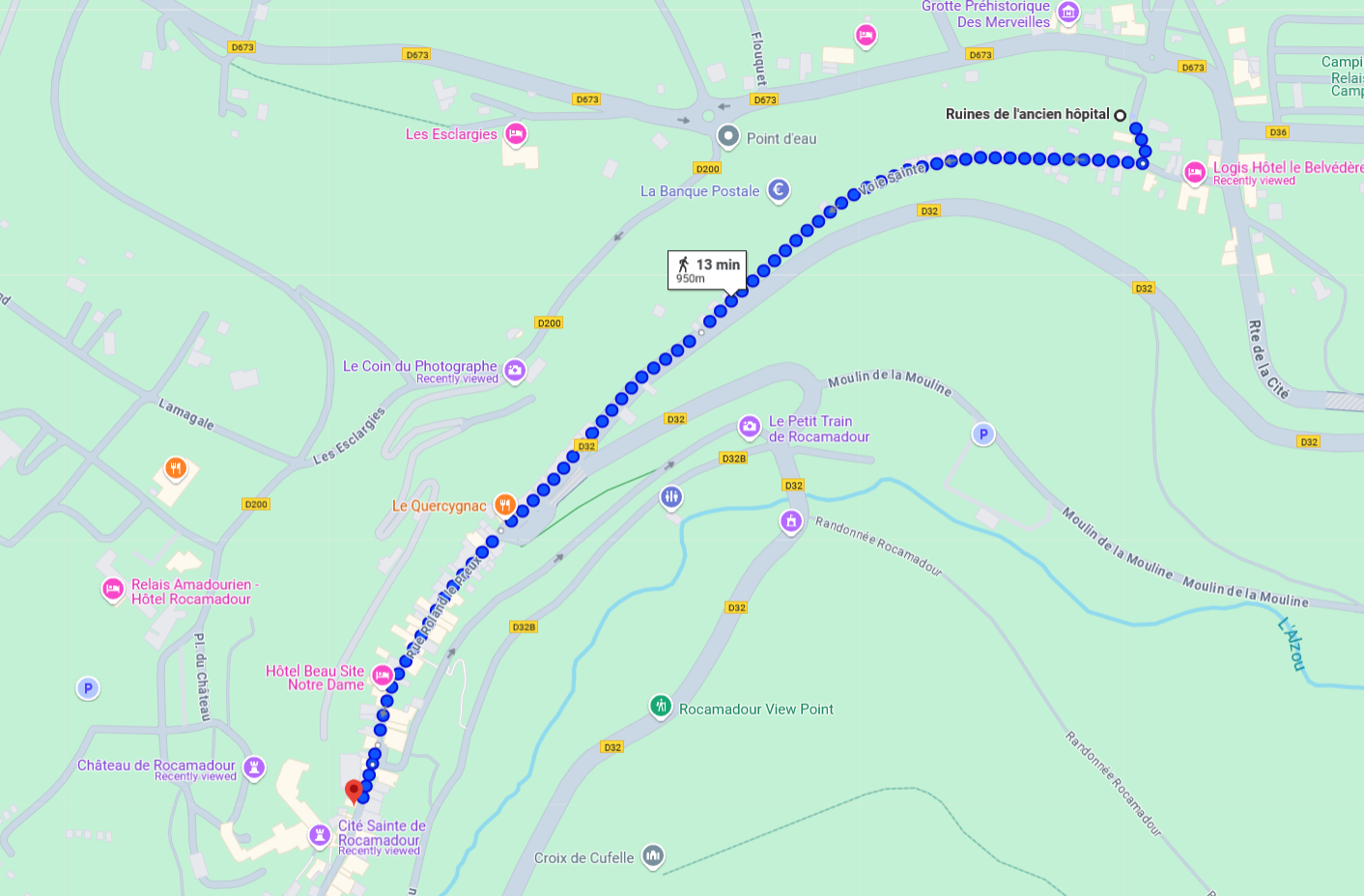About Rocamadour
Rocamadour is a breathtaking medieval pilgrimage site and village, dramatically built into a cliff face in the Lot department of southwestern France, within the Occitania region. It's renowned for its spiritual significance, stunning architecture, and unique natural setting, attracting around 1.5 million visitors annually [1, 2, 6].
Location and Setting
Rocamadour is truly "suspended between Heaven and Earth," rising in stages from the Alzou canyon, 150 meters above the river. The houses, churches, and castle appear to be an extension of the rock itself, creating a truly spectacular and unforgettable panorama [1, 3, 6]. It is part of the Causses du Quercy Regional Nature Park, a UNESCO Global Geopark [1].
History and Pilgrimage
Rocamadour has been a sacred site for millennia, with evidence of prehistoric human activity, including cave drawings, found nearby [2, 3]. Its fame as a Christian pilgrimage site began in the 11th century, but dramatically increased in 1166 with the alleged discovery of an incorrupt body, believed to be that of Saint Amadour (also known as Saint Amator) [2, 4]. Legend identifies Saint Amadour as Zaccheus, a tax collector who entertained Jesus in his home and later became a hermit [1, 4]. The site quickly became one of the four major pillars of Christendom in the Middle Ages, on par with Jerusalem, Rome, and Santiago de Compostela [2, 4]. Kings, queens, and commoners flocked to Rocamadour, seeking miracles and spiritual solace. The pilgrimage involved climbing the 216 steps of the "Grand Escalier" (Great Staircase), often on their knees as an act of penance [1, 2, 4]. Though partially destroyed during the Wars of Religion in 1562 and later falling into disrepair, Rocamadour was extensively rebuilt in the 19th century and remains an active pilgrimage destination today [2, 4].
Key Attractions and Things to Do
The Sanctuary This is the heart of Rocamadour's religious significance. Clustered together on a small esplanade, built into the cliff face, are seven chapels and churches.
Chapelle Notre-Dame (Our Lady Chapel) This 15th-century chapel is home to the revered Black Madonna of Rocamadour. Carved from walnut in the 12th century, the statue has acquired a dark patina over centuries due to oxidation and candle smoke [2, 4, 5]. It's associated with numerous miracles, particularly those involving sailors, and a miraculous bell in the chapel is said to ring spontaneously when a miracle occurs at sea [2, 4, 5]. Many ex-votos (votive offerings) in the shape of ships hang in the chapel [2, 5].
Basilique Saint-Sauveur This Romanesque and Gothic basilica, dating from the 11th to 13th centuries, is a UNESCO World Heritage Site, as is the Crypt of Saint Amadour below it, which once housed the saint's remains [1, 2, 4].
Durandal Sword Legend claims that Roland, Charlemagne's nephew, threw his magical sword Durandal into the cliff above the Notre-Dame chapel, where it remains embedded to this day [2, 3].
The Grand Escalier (Pilgrim's Steps) The iconic 216 steps that lead from the medieval village up to the sanctuary. While many still climb, lifts are available for an easier ascent [1, 2, 6].
The Medieval Village The main street, Rue de la Couronnerie, is a bustling, narrow lane lined with charming medieval houses, shops, and restaurants. Visitors enter through fortified gateways like the Figuier gateway [1, 2, 6].
Château de Rocamadour At the very top of the cliff, overlooking the village and sanctuary, stands the château. Originally a 14th-century fortress designed to protect the religious site, it was largely rebuilt in the 19th century. While much of it is in disrepair, the ramparts offer spectacular panoramic views of the Alzou canyon and the village below [1, 2, 4].
Grotte des Merveilles A prehistoric cave located near Rocamadour, featuring 25,000-year-old rock paintings and impressive rock formations [2, 3, 6].Rocamadour Goat Cheese The area is famous for its delicate Rocamadour goat's cheese, which has an AOC (Appellation d'Origine Contrôlée) protection [1, 2].Local Delicacies Beyond cheese, visitors can savor local specialties like truffles, foie gras, duck products, and Quercy lamb, often accompanied by local Cahors wine [1, 6].
References
Text generated by gemini.google.com
- 1. en.wikipedia.org
- 2. www.britannica.com.
- 3. www.francethisway.com/
- 4. Rocamadour Cheese
- 5. thecheeseatlas.com






























